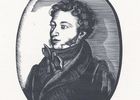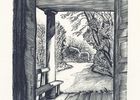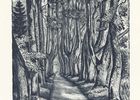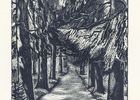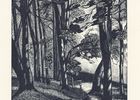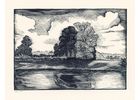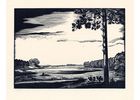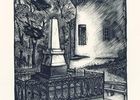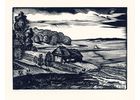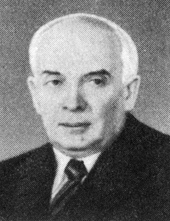
Painter, graphic artist and illustrator.
Khizhinsky was a graduate of the Architecture Department of the Kiev Art School (1918) and the Graphics Department of the Academy of Arts in St. Petersburg where his professors were Vladimir Konashevich and Dmintry Mitrokhin (1922-1927). He studied at Mikhail Boychuk’s Studio with the Kiev Academy of Arts, worked in the field of book illustrations and decorations. His favourite technique was xylography. Khizhinsky was a member of the Society for the Encouragement of Arts and the New Union of Itinerant Exhibitions (1908-1930), orginised the Society of Graphic Artists (1928-1932). During the early period of his creative career, he was under a strong influence of the Mir iskusstva [“The World of Art”] artists and later got interested in the works by Vladimir Favorsky, Alexey Kravchenko, Russian woodcuts of the 17th and 18th centuries, and also Russian and Ukrainian luboks [“cheap popular prints”].
In this vein, he created several series of illustrations to Pyatirechiye [“Five Rivers”] by Olga Ozarovskaya (1930), Poteryannaya perchatka [“The Lost Glove”], a novel by Anatoly Vinogradov (1930), Virgil’s “Aeneid” (1932), and others. The book plates he created in the late 1920s and the early 1930s are remarkable for their craftsmanship. He got an award at the 1937 International Exhibition in Paris for his design of Olga Forsch’s Odety kamnem [“Clad in Stone”]. In the 1930s, the artist turned to landscapes depicting them in his woodcuts in a most poetic and lyrical way. In this vein, he created woodcut series Pushkin’s Sites (1935) and Lermontov’s Sites (1938-1939). During the war (World War II), Khizhinsky remained in besieged Leningrad. In the 1940s, he created cycles dedicated to the devastated city – Prigorody Leningrada razrushennye fashistami [“The Environs of Leningrad destroyed by the Nazis”] (1944-1949). In 1948-1949, he came up with a fresh series of Pushkin’s Sites. In the 1950s-1960s, there appeared his illustrations to Carlo Goldoni’s comedies (1959), Prosper Merimee’s “Chronicles of the Times of King Charles IX” (1960—1961) and other pieces. All his works are distinguished by dynamic imagery; they are full of light-and-shade interplay which demonstrates the master illustrator’s true talent.

